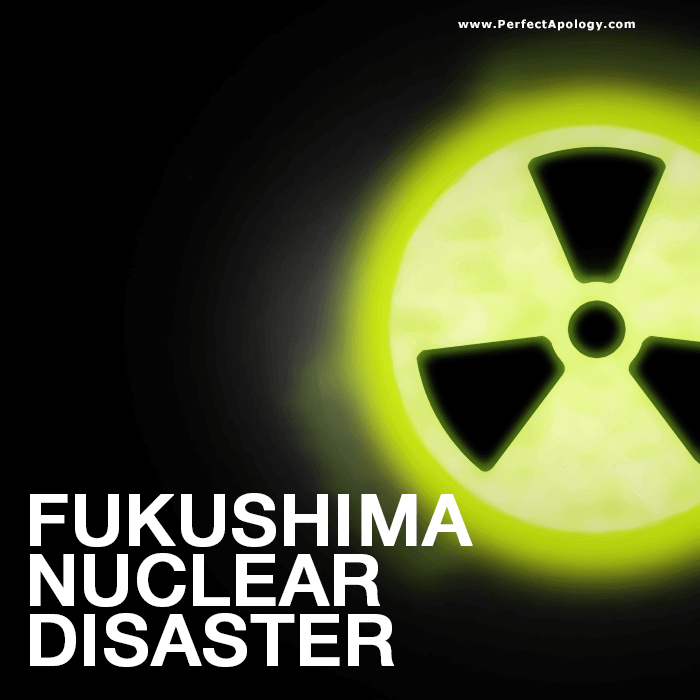The Fukushima Nuclear Disaster | Crisis Management
The Fukushima nuclear disaster & crisis of 2011 followed a long series of failures and compounded ripple effects across layers of security, beginning with a 9.0 magnitude earthquake and tsunami off the Northeast coast of Japan.

The resulting nuclear catastrophe was ultimately raised to a Category 7 (alongside the 1986 Chernobyl disaster). Many of the reactors at the plant were affected and required solutions that were too complex and multifaceted to implement quickly.
Although the Fukushima nuclear plant was designed to withstand a 19 foot tsunami wave, the 46 foot wave that followed the earthquake completely flooded the plant and all electronics.
Also flooded were the plant's key generators and pumps designed to maintain the flow of water through the cooling systems—essential to cooling the reactor's fuel rods and preventing them from overheating and melting through the reactor's core.
Ultimately, all of the reactors (1-4) at the Fukushima nuclear plant were affected and experienced partial meltdown and nuclear fuel leakage. The spent fuel rods stored in reactors 5 and 6 also overheated, despite the fact that they were actually shutdown at the time of the tsunami.
The combined effects of these failures raised concerns about radiation leakage and led to a 20 km (12 mile) evacuation zone around the plant, a ban on all food produced in the area, and the prohibition of using tap water to prepare food for children.
The Negative Impact Of Poor, Incomplete Communications
The initial assessment by Japanese officials from the Tokyo Electric Power Company (TEPCO) was that the crisis at the Fukushima nuclear plant reached level 4 on the International Nuclear Event Scale, but that was raised over a period of weeks to level 5 as the number of crises multiplied, and then, after failing to resolve them and serious radiation levels, the crisis was raised to the maximum level, 7.
The overwhelming consensus on TEPCO's and the Japanese government's crisis management strategy was uniformly negative and highly critical. Information was consistently slow in coming as the company officials tried their best to minimize or downplay the severity of the crisis.
These delays in assessing the gravity of the crisis led to a much slower pace of evacuation and can logically be linked to higher rates of cancer.
It was not until May 20, over two months later, when officials from TEPCO admitted reactor 1 did in fact experience a full meltdown, reaching temperatures that approached 3,000 degrees Celsius.
This occurred within 6 hours of the earthquake, and within 16 hours the reactor core dropped to the bottom of the vessel.
In others words, TEPCO took over two months to announce (and address) the fact that the worst case scenario occurred within 16 hours of the earthquake—officials were less concerned about the safety of the Japanese public and more concerned about the company's survival and reputation.
Ongoing Denials, Errors And Apologies
Despite knowing the truth they continued to insist the crisis merited only a category 4 ranking. It should be noted that the nuclear core of reactors 2 and 3 were also beached, which resulted in tons of water being pumped into the reactors to cool which leaked radioactive material into the surrounding area—very little of the contaminated water was contained.
Of course the most serious error was the failure to plan for the worst case scenario, especially given the location of the Fukushima nuclear plant on the shorelines of an earthquake zone, and the haphazard and insufficient cleanup efforts.
It took several weeks before the company and government requested and received support from the US for crucial equipment to facilitate the re-cooling of the reactors.
Fukushima Nuclear Plant and TEPCO Apology
I would like to extend my sincerest condolences and prayers for the precious loss of life due to the devastating Tohoku-Chihou-Taiheiyo-Oki Earthquake that struck our nation on March 11. Our deepest sorrows go to those people and their families who are suffering from the damage.
Furthermore, I deeply apologize for the distress caused due to the extensive damage that Fukushima Daiichi Nuclear Power Station sustained resulting in the leakage of radioactive materials to the surrounding areas of the power station, Fukushima Prefecture, and broader society. Currently, we are working around the clock to bring the situation under control with support and cooperation from the society, related ministries and government offices and local governments.
We also regret the tremendous inconvenience the recent rolling blackouts have caused to our customers and society since March 14th due to the tight supply-demand balance of electricity.
As a result of widespread cooperation from our customers in conserving electricity, the supply-demand balance has improved significantly. Hence, in principle, we have decided to cease the implementation of rolling blackouts and will do our best to maintain the supply of electricity aiming to achieve "Zero Rolling Blackouts" in principle during the summertime. Your continuous cooperation in saving electricity would be highly appreciated."
April 2011, Tokyo Electric Power Company, Inc. -- Masataka Shimizu, President
TEPCO President Shimizu went back to the Fukushima plant in early May 2011 to offer another apology as the disaster escalated.
This time he directed the apology at Fukushima governor Yuhei Sato, the latter very critical of how TEPCO was handling this crisis.
We have caused very serious trouble. We'll soon begin handing out initial payments, set up consultation centers and respond to people's requests. Compensation must be provided at all cost.
Following TEPCO's apology to the governor, Sato reportedly offered an emotional response when referring to the 6,000 children who had to move to other areas because of radiation fears:
How can you understand the feelings of children from the disaster-hit areas? They've been scattered across the nation and only want to come home as soon as possible.
The governor then criticized Shimizu's response to the crisis so far:
Isn't there a more sincere way to apologize? I don't want to hear the words 'unpredictable scale of the tsunami' ever again. [The workers in the Fukushima nuclear plant] are working harder than the president. They're the only hope for the residents of this prefecture. I wish their working environment would be improved.
Clear Timely & Honest Communications Are Critical
As was the case with a lingering BP oil spill crisis and apology that had happened around that time, it is very difficult for TEPCO officials to offer a credible apology when the damage, pain and suffering continued to unfold before everyone's eyes, and when some of the most devastating effects of ongoing radiation poisoning were virtually guaranteed to kick in over the subsequent months and years.
A good measure of the suffering is a direct product of what TEPCO officials were not prepared to do earlier.
Effective crisis communication, supported by an honest and early apology, would have gone a long way to demonstrating a commitment to accept full responsibility and a commitment to fix past mistakes at the Fukushima nuclear plant.
Instead, the communication strategy accomplished the exact opposite by creating the impression that TEPCO had no control over the worsening crisis.
How Not to Handle An Environmental Crisis
The Fukushima nuclear plant catastrophe is perhaps an even worse illustration than BP's of how not to manage an environmental crisis.
Like the BP crisis, the issuing of apologies in the midst of an ever deteriorating crisis makes it very difficult to generate the kind of rational understanding and public resignation required for apologies to be accepted—a significant majority of Japan's citizens will never forgive TEPCO or the government.
And, of course, TEPCO also owes an enormous debt of gratitude to the individuals who sacrificed their health and safety to manage an ever worsening meltdown and cooling crisis, many of whom accepted the job of cleaning up the nuclear waste after. These individuals and their families will probably never receive the kind of thanks, gratitude and apology they deserve.
TEPCO also gets very poor grades for failing to apologise for the way they managed the crisis—the public relations campaign, spin and delays inevitably jeopardized the health of tens of thousands of citizens in surrounding areas.
These inexcusable mistakes obviously compounded the problem by expanding the number of reasons for additional apologies.
Consequently, the very general apology issued by TEPCO could not possibly be perceived as sufficient to cover the enormity of the pain and suffering experienced as a result of the meltdowns at the Fukushima nuclear plant. And the slow pace of cleanup after the tsunami would no doubt generate more demands for another round of official apologies.
The stoic image of Japanese citizens waiting in long, violence free lines waiting for food and supplies, committed to working as a community to rebuild their nation after the crisis, has certainly served the Japanese people very well in a difficult time.
But this reserved response to the crisis also means that TEPCO officials will get off without having to experience the kind of anger they deserve.
Fukushima Daiichi Nuclear Disaster/TEPCO Apology Rating
Japan's environmental catastrophe is arguable much larger than BP's, and the costs to Japan's government put the country's economy into a full blown recession.
It will never be known how much damage TEPCO could have prevented had they managed the crisis more effectively, but the health costs to the country (and tax payers) will continue to rise for decades as a result of a silent, hidden killer.
APOLOGY RATING → 3/10
Check out some other corporate case studies of public apologies and learn what questions to ask before issuing one.


